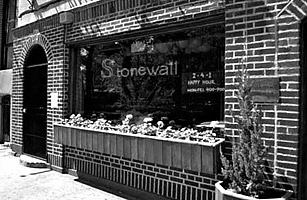
The Stonewall Inn in New York City's West Village.
June 28, 1969
It was 1:20 a.m. when eight cops stomped into the Stonewall Inn, a dive in Manhattan's Greenwich Village district that had no liquor license but served watery drinks to a mix of drag queens, street kids, gay professionals and closeted and straight mafiosi (who ran the place). Within two hours, the Village was bleeding and burning as hundreds rioted.
How did the nightly saturnalia at Stonewall produce protests that would kick start the modern gay-rights movement? The uprising was inspirited by a potent cocktail of pent-up rage (raids of gay bars were brutal and routine), overwrought emotions (hours earlier, thousands had wept at the funeral of Judy Garland) and drugs. As a 17-year-old cross-dresser was being led into the paddy wagon and got a shove from a cop, she fought back. "[She] hit the cop and was so stoned, she didn't know what she was doing — or didn't care," one of her friends later told Martin Duberman, author of the history Stonewall.
Later, the deputy police inspector in charge would explain that day's impact: "For those of us in [the] public morals [division], things were completely changed ... Suddenly they were not submissive anymore." Today gays and lesbians memorialize that night each year with a weekend of rallies, parades and parties — a spectacle as inspiring and raunchy as the Stonewall itself.